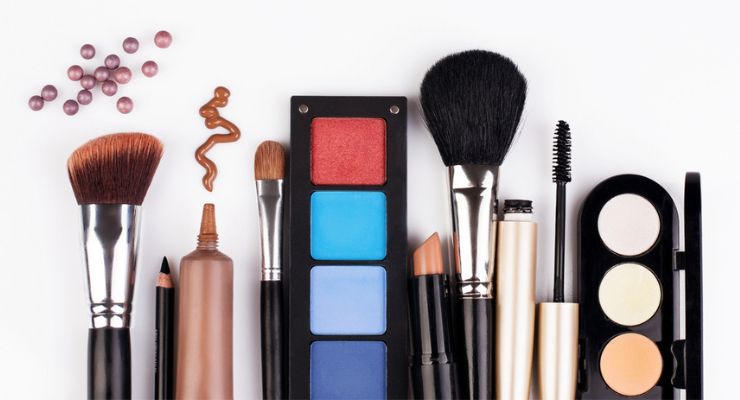11.07.23
According to The Insight Partners’ latest study, the cosmetics market is expected to grow from $262.21 billion in 2022 to $367.69 billion by 2030 at a CAGR of 4.6% from 2022 to 2030.
People face various skin-related problems such as rashes, acne, and sensitivity in many regions owing to environmental conditions like UV rays, deserts, and pollution. Thus, manufacturers are launching products with hydrating properties.
Read about 4 key ways innovation is changing the beauty industry.
In September 2022, L'Oréal signed an agreement to acquire SkinBetter Science, a physician-dispensed American skincare brand. Skinbetter Science is known for formulating innovative products with active ingredients for anti-aging, moisturizing, cleansing, exfoliating, skin peeling, and sun protection. Such product innovation by key players helps to create a strong foothold in the cosmetics market.
Moreover, Key market players are expanding their presence in various countries to cater to the increasing demand by collaborating with other companies or acquiring other businesses. In January 2022, Procter & Gamble acquired the US-based luxury skincare brand Tula. Tula is a clean skincare brand powered by superfoods and probiotic extracts. Such business expansion strategies by major manufacturers are expected to drive the cosmetics market growth in the forecast period.
The personal care product manufacturers faced significant challenges due to supply chain constraints caused by trade bans, nationwide lockdowns, and travel restrictions. The disruptions in the supply chain created a shortage of raw materials, which negatively impacted the distribution and production of various products, leading to increased prices. These factors hampered the profitability of the cosmetics and personal care industry in 2020 and early 2021, thereby hampering the cosmetics market growth.
However, in 2021, various economies resumed their operations as governments announced relaxation in the previously imposed restrictions, which fueled the global marketplace. Moreover, manufacturers were permitted to open at full capacity, which helped to overcome the demand and supply gap and other repercussions. As people of many countries were fully vaccinated by 2021, the manufacturers focused on increasing their production to revive their businesses.
Focus on Product Innovation
Cosmetic product manufacturers and end users across the globe are investing significantly in strategic initiatives such as product innovation, expansion, and mergers & acquisitions of their businesses to attract large number of consumers and enhance their market position. To maintain their strategic position in the market, key players are investing significantly in the quality enhancement of various cosmetics.People face various skin-related problems such as rashes, acne, and sensitivity in many regions owing to environmental conditions like UV rays, deserts, and pollution. Thus, manufacturers are launching products with hydrating properties.
Read about 4 key ways innovation is changing the beauty industry.
Increasing Demand for Anti-Aging Creams
Moreover, the demand for anti-aging creams for younger skin is increasing. The market players are adopting innovative strategies such as product innovations, mergers, and acquisitions to strengthen their position in the anti-aging segment.In September 2022, L'Oréal signed an agreement to acquire SkinBetter Science, a physician-dispensed American skincare brand. Skinbetter Science is known for formulating innovative products with active ingredients for anti-aging, moisturizing, cleansing, exfoliating, skin peeling, and sun protection. Such product innovation by key players helps to create a strong foothold in the cosmetics market.
Demand for Organic Skincare Products Grows
The increasing prevalence of skin diseases caused by synthetic ingredients in beauty products and cosmetics fuels the demand for organic skincare products. Thus, manufacturers are launching different organic skincare products.Moreover, Key market players are expanding their presence in various countries to cater to the increasing demand by collaborating with other companies or acquiring other businesses. In January 2022, Procter & Gamble acquired the US-based luxury skincare brand Tula. Tula is a clean skincare brand powered by superfoods and probiotic extracts. Such business expansion strategies by major manufacturers are expected to drive the cosmetics market growth in the forecast period.
Impact of Covid-19 Pandemic on the Cosmetics Market
The bans imposed by various governments in Europe, North America, and Asia Pacific on international travel forced the companies to temporarily put their collaboration and partnership plans on hold. During the starting phase of the Covid-19 pandemic, implementing lockdown restrictions and shutdown of manufacturing units led to a production shortfall, creating a demand and supply gap.The personal care product manufacturers faced significant challenges due to supply chain constraints caused by trade bans, nationwide lockdowns, and travel restrictions. The disruptions in the supply chain created a shortage of raw materials, which negatively impacted the distribution and production of various products, leading to increased prices. These factors hampered the profitability of the cosmetics and personal care industry in 2020 and early 2021, thereby hampering the cosmetics market growth.
Adoption of Online Retail
Consumers preferred e-commerce platforms during the pandemic to shop for cosmetic products. Thus, the rise in adoption of online retail boosts the demand for cosmetics. According to data released by Bluecore, an average increase of 127% online sale of skincare products and beauty products was observed globally in June 2020, when compared with same month in 2019. This helped to fulfill the increasing demand of the consumers. These factors positively impacted the cosmetics market growth during the Covid-19 pandemic.However, in 2021, various economies resumed their operations as governments announced relaxation in the previously imposed restrictions, which fueled the global marketplace. Moreover, manufacturers were permitted to open at full capacity, which helped to overcome the demand and supply gap and other repercussions. As people of many countries were fully vaccinated by 2021, the manufacturers focused on increasing their production to revive their businesses.




























